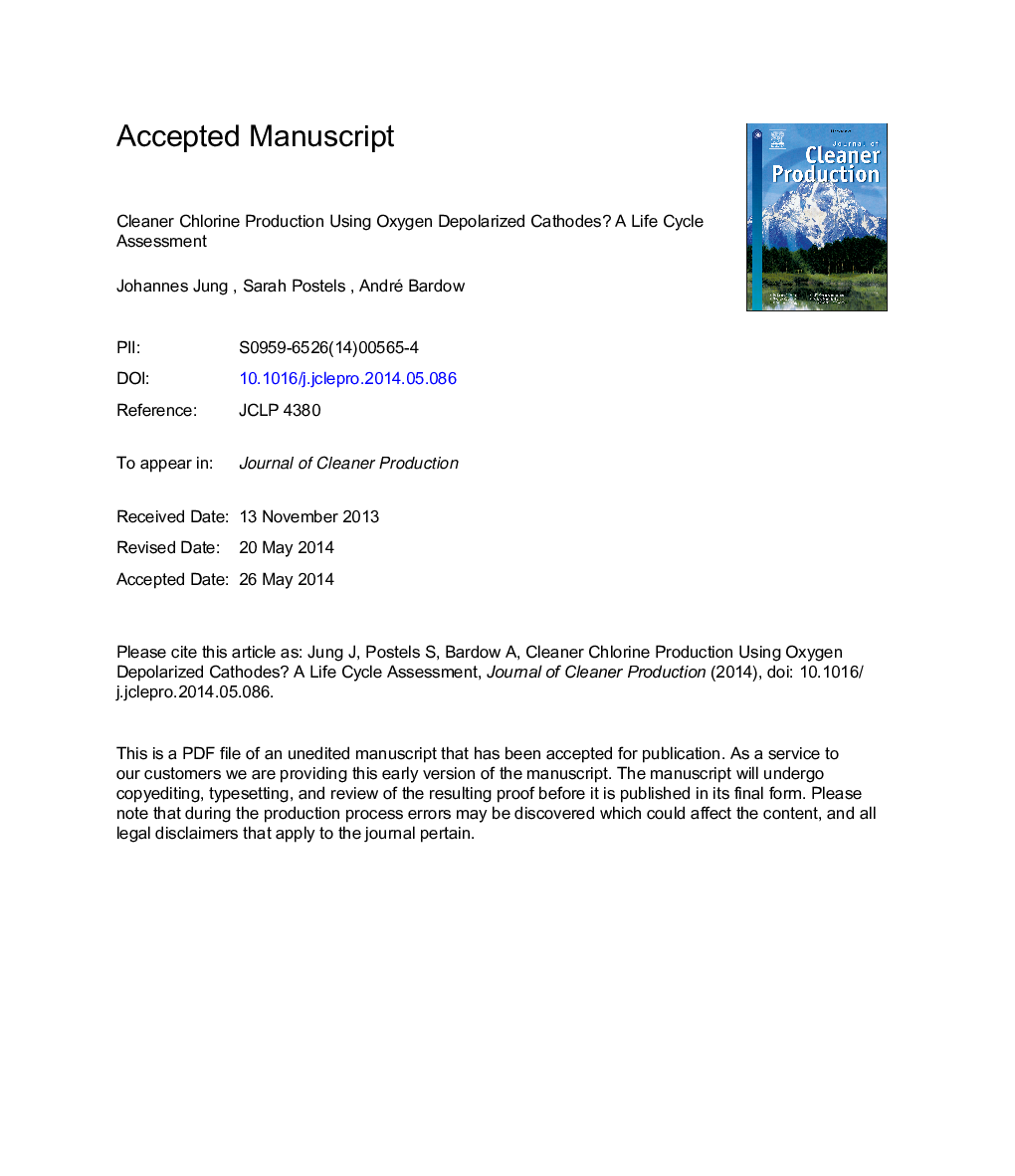| Article ID | Journal | Published Year | Pages | File Type |
|---|---|---|---|---|
| 8105897 | Journal of Cleaner Production | 2014 | 33 Pages |
Abstract
Chlorine and caustic soda are two indispensable chemical commodities co-produced in the so-called chlor-alkali electrolysis. Chlor-alkali electrolysis is today a target for cleaner production because of its large electricity demand causing considerable environmental impacts. The electricity demand of chlor-alkali electrolysis can be reduced by 30% using oxygen depolarized cathodes (ODCs) instead of the standard cathodes (STCs) used today. However, ODCs require additional resources and do not produce hydrogen in contrast to existing chlor-alkali plants. This work investigates if the reduction in electricity demand also contributes to cleaner production. For this purpose, environmental impacts from chlor-alkali electrolysis using ODCs are compared to the impacts from best available existing chlor-alkali plants using STCs. The life cycle assessment includes manufacturing, operation and disposal of the plants. To account for utilization of hydrogen from existing chlor-alkali plants, two alternative utilization scenarios are studied: energy recovery by combustion of hydrogen and use of hydrogen as chemical commodity. Seven environmental impact categories are studied in detail using the ReCiPe method. Chlor-alkali electrolysis using ODCs yields lower environmental impacts in up to six environmental impact categories. Plant operation contributes most in six out of seven impact categories. Chlor-alkali electrolysis using ODCs has thus potential to contribute to cleaner production in the chlor-alkali industry.
Related Topics
Physical Sciences and Engineering
Energy
Renewable Energy, Sustainability and the Environment
Authors
Johannes Jung, Sarah Postels, André Bardow,
